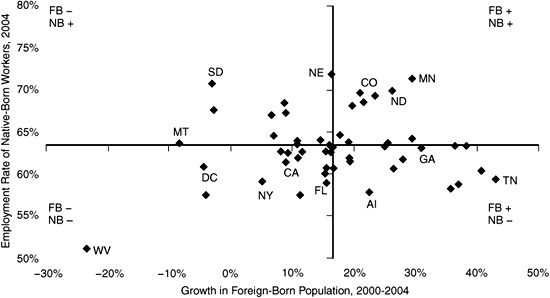Managing Hispanic and Latino Employees
A Guide to Hiring, Training, Motivating, Supervising, and Supporting the Fastest Growing Workforce Group
Louis Nevaer (Author)
Publication date: 01/11/2010
This is the first comprehensive book on all aspects of managing Hispanic employees — who already represent nearly a quarter of the U.S. workforce and are projected to represent more than half by 2050 — and it combines practical advice with research knowledge on the unique cultural issues in hiring, motivating, training, supervising, developing, retaining, and other aspects of managing Hispanic workers.
Hispanics are the largest minority group and the fastest growing demographic in the United States—they are already 15% of the population and 22% of the workforce, and it’s estimated that by 2050 those numbers will go up to 36% and 55% In this much-needed new book Louis Naevar helps non-Hispanic employers and colleagues understand how Hispanics see the business world—and the world in general—so they can better support and develop this dynamic group of workers.
Drawing on his own ethnic background and years of experience as director of the organization Hispanic Economics, Nevaer identifies three concepts that shape Hispanic culture and often result in behaviors and beliefs very different than, and sometimes seemingly at odds with, those of non-Hispanics. He explores subtle nuances within the Hispanic community—which is no more monolithic than the “European” community—that will help employers appreciate differences and tensions between Hispanic workers. With this as an overarching framework, and using a wealth of specific examples, Nevaer shows how to develop Hispanic-friendly approaches in every aspect of the modern workplace, from recruitment, retention and evaluation to training, mentoring, and labor relations.
As Hispanics become an ever-larger segment of the workforce, organizations who fail to make them feel welcome and valued risk losing access to a significant source of talent and innovation, not to mention a connection to a major evolving market. Managing Hispanic and Latino Employees is an invaluable resource for creating an environment where Hispanic workers feel comfortable, recognized and rewarded.
Hispanics are the largest minority group and the fastest growing demographic in the United States—they are already 15% of the population and 22% of the workforce, and it’s estimated that by 2050 those numbers will go up to 36% and 55% In this much-needed new book Louis Naevar helps non-Hispanic employers and colleagues understand how Hispanics see the business world—and the world in general—so they can better support and develop this dynamic group of workers.
Drawing on his own ethnic background and years of experience as director of the organization Hispanic Economics, Nevaer identifies three concepts that shape Hispanic culture and often result in behaviors and beliefs very different than, and sometimes seemingly at odds with, those of non-Hispanics. He explores subtle nuances within the Hispanic community—which is no more monolithic than the “European” community—that will help employers appreciate differences and tensions between Hispanic workers. With this as an overarching framework, and using a wealth of specific examples, Nevaer shows how to develop Hispanic-friendly approaches in every aspect of the modern workplace, from recruitment, retention and evaluation to training, mentoring, and labor relations.
As Hispanics become an ever-larger segment of the workforce, organizations who fail to make them feel welcome and valued risk losing access to a significant source of talent and innovation, not to mention a connection to a major evolving market. Managing Hispanic and Latino Employees is an invaluable resource for creating an environment where Hispanic workers feel comfortable, recognized and rewarded.
Formats
Paperback - $24.95$9.95
Paperback - $24.95$9.95
ePub - $24.95 - Members: $17.47
PDF eBook - $24.95 - Members: $17.47
Find out more about our Bulk Buyer Program
- 10-49: 20% discount
- 50-99: 35% discount
- 100-999: 38% discount
- 1000-1999: 40% discount
- 2000+ Contact ( [email protected] )
Orders of 10+ copies shipping to one address receive free ground shipping
within the U.S. Shipping to separate individual addresses via USPS media mail will be applied a handling fee:
Book Details
Overview
This is the first comprehensive book on all aspects of managing Hispanic employees — who already represent nearly a quarter of the U.S. workforce and are projected to represent more than half by 2050 — and it combines practical advice with research knowledge on the unique cultural issues in hiring, motivating, training, supervising, developing, retaining, and other aspects of managing Hispanic workers.
Hispanics are the largest minority group and the fastest growing demographic in the United States—they are already 15% of the population and 22% of the workforce, and it’s estimated that by 2050 those numbers will go up to 36% and 55% In this much-needed new book Louis Naevar helps non-Hispanic employers and colleagues understand how Hispanics see the business world—and the world in general—so they can better support and develop this dynamic group of workers.
Drawing on his own ethnic background and years of experience as director of the organization Hispanic Economics, Nevaer identifies three concepts that shape Hispanic culture and often result in behaviors and beliefs very different than, and sometimes seemingly at odds with, those of non-Hispanics. He explores subtle nuances within the Hispanic community—which is no more monolithic than the “European” community—that will help employers appreciate differences and tensions between Hispanic workers. With this as an overarching framework, and using a wealth of specific examples, Nevaer shows how to develop Hispanic-friendly approaches in every aspect of the modern workplace, from recruitment, retention and evaluation to training, mentoring, and labor relations.
As Hispanics become an ever-larger segment of the workforce, organizations who fail to make them feel welcome and valued risk losing access to a significant source of talent and innovation, not to mention a connection to a major evolving market. Managing Hispanic and Latino Employees is an invaluable resource for creating an environment where Hispanic workers feel comfortable, recognized and rewarded.
Hispanics are the largest minority group and the fastest growing demographic in the United States—they are already 15% of the population and 22% of the workforce, and it’s estimated that by 2050 those numbers will go up to 36% and 55% In this much-needed new book Louis Naevar helps non-Hispanic employers and colleagues understand how Hispanics see the business world—and the world in general—so they can better support and develop this dynamic group of workers.
Drawing on his own ethnic background and years of experience as director of the organization Hispanic Economics, Nevaer identifies three concepts that shape Hispanic culture and often result in behaviors and beliefs very different than, and sometimes seemingly at odds with, those of non-Hispanics. He explores subtle nuances within the Hispanic community—which is no more monolithic than the “European” community—that will help employers appreciate differences and tensions between Hispanic workers. With this as an overarching framework, and using a wealth of specific examples, Nevaer shows how to develop Hispanic-friendly approaches in every aspect of the modern workplace, from recruitment, retention and evaluation to training, mentoring, and labor relations.
As Hispanics become an ever-larger segment of the workforce, organizations who fail to make them feel welcome and valued risk losing access to a significant source of talent and innovation, not to mention a connection to a major evolving market. Managing Hispanic and Latino Employees is an invaluable resource for creating an environment where Hispanic workers feel comfortable, recognized and rewarded.
About the Author
Excerpt




 Hispanics are almost a decade younger (9.5 years) than the general population;
Hispanics are almost a decade younger (9.5 years) than the general population;





